Best 10 Off-Road Trails in the World for 2025: Ultimate Adventure Destinations
- April 4, 2024
- 0 comment
Explore 2025’s top 10 off-road trails worldwide, offering unparalleled adventure, stunning scenery, and thrilling challenges. The allure of off-road adventures lies in the unbridled thrill of exploring the uncharted, where the rugged terrains challenge both machine and spirit.
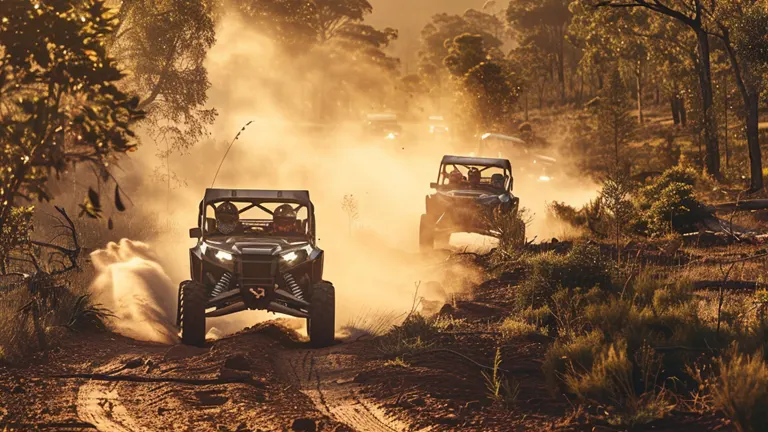
As more adventurers seek to escape the beaten path, off-roading has surged in popularity, leading to the discovery and development of trails that promise an unmatched blend of natural beauty and adrenaline. This article aims to guide thrill-seekers through the best 10 off-road trails in the world for 2025, handpicked for their unique combination of challenge, scenery, and the sheer joy of exploration.
List of the Best 10 Off-Road Trails in the World for 2025
- Darien Gap, Panama to Colombia
- Rubicon Trail, USA
- Simpson Desert, Australia
- Transfăgărășan Highway, Romania
- Atlas Mountains, Morocco
- Mojave Road, USA
- Salar de Uyuni, Bolivia
- The Old Telegraph Track, Australia
- Ring Road, Iceland
- Kalimantan, Borneo, Indonesia
The Essence of Off-Roading
Off-roading is the art of navigating and driving on unpaved ground, away from conventional roads, where the terrain can include sand, gravel, riverbeds, mud, snow, rocks, and other natural terrain. This activity is not just about the capability of the vehicle but also about the driver’s skill in overcoming natural obstacles. Off-roading vehicles, such as 4x4s, ATVs, and dirt bikes, are often modified with enhanced suspension systems, all-terrain tires, and additional protective gear to tackle these diverse conditions.

The essence of off-roading is respect—respect for nature, for the vehicle, and for personal limits. Adventurers must prepare meticulously, adhering to safety guidelines and local regulations, while practicing conservation to minimize their environmental impact. It’s a balance between the thrill of adventure and the responsibility of preserving the natural beauty for future generations to explore.
Criteria for Selection
To identify the best off-road trails for 2025, we meticulously assessed them based on several criteria. Our evaluation aimed to encompass trails that not only showcase remarkable landscapes but also cater to diverse skill levels and are accessible to a broad audience. Additionally, we sought out trails offering distinct experiences, including those newly opened or significantly enhanced to enrich the off-roading experience.
Criteria:
- Scenic Value: Emphasis on trails offering exceptional landscapes.
- Difficulty Level: Inclusion of trails for all skill levels.
- Accessibility: Focus on trails that adventurers can feasibly reach.
- Uniqueness: Preference for trails with unique experiences.
- New or Improved: Consideration for trails with recent enhancements.
Best 10 Off-Road Trails in the World for 2025
1. Darien Gap, Panama to Colombia
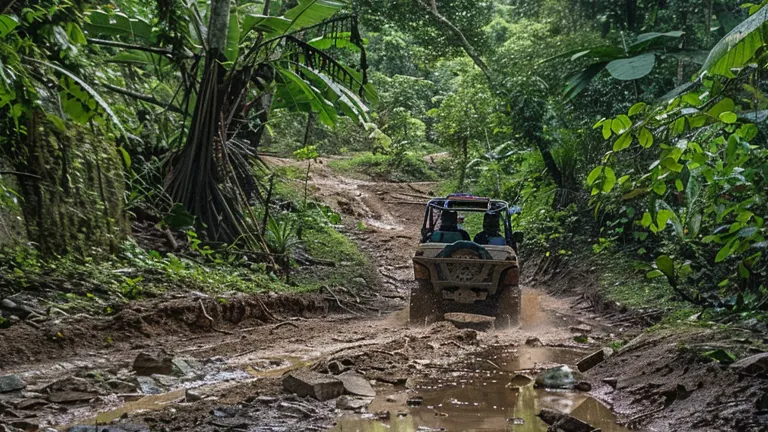
The Darien Gap challenges adventurers with its dense jungles and swamps over a span of 160 kilometers (99 miles) between Panama and Colombia, making it one of the most difficult terrains on Earth. It requires significant skill, preparation, and perseverance to navigate this roadless, remote area.
- Unique Features: Known for its unparalleled biodiversity and as a critical ecological bridge between the North and South American continents. The area is rich in unique wildlife and plant species, offering adventurers a once-in-a-lifetime exploration opportunity.
- Size & Difficulty: Approximately 160 kilometers; considered one of the most challenging off-road trails due to its terrain and lack of infrastructure.
- Best Time to Visit: January to March, during the dry season, to avoid the heaviest swamps and rivers.
- Visitor Tips: Joining an organized tour or convoy is highly recommended due to the trail’s complexity and risks. Ensuring all travel permits are in order is essential for a smooth journey.
- Associated Fees: Guided tours can cost upwards of $1,000, depending on the length and services provided.
2. Rubicon Trail, USA
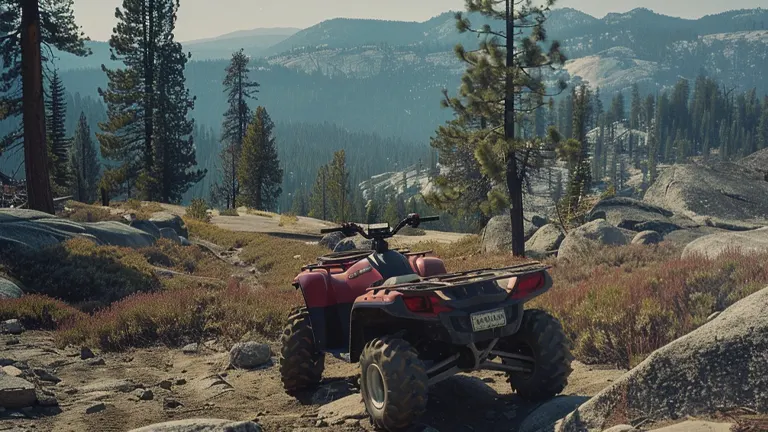
The Rubicon Trail in the Sierra Nevada of California is a legendary path for off-roading, stretching 22 miles with a mix of rock crawls, granite pathways, and breathtaking mountain views. This trail is both a test of driving skill and a showcase of natural beauty, offering one of the best off-roading experiences in the United States.
- Unique Features: The trail is famous for the Jeep Jamboree event, attracting enthusiasts from across the globe. Its diverse terrain includes some of the most challenging rock crawling sections available.
- Size & Difficulty: 22 miles long with various difficulty levels, suitable for experienced off-roaders equipped with modified vehicles.
- Best Time to Visit: Accessible from July to September when the weather is most favorable for off-roading and camping.
- Visitor Tips: Preparing your vehicle with necessary modifications like rock sliders and skid plates is crucial. It’s also recommended to travel in groups for safety.
- Associated Fees: Participation in the Jeep Jamboree event requires a registration fee, which can vary but typically ranges from $300 to $600, excluding accommodations and meals.
3. Simpson Desert, Australia
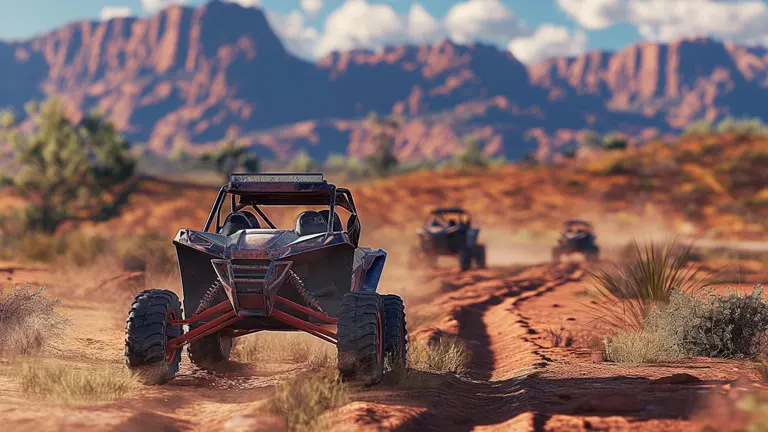
Crossing the Simpson Desert is an adventurer’s challenge, featuring over 1,100 dunes in one of the most remote parts of Australia. This trail, approximately 500 kilometers long, takes you through a vast expanse of sandy desert, providing an unparalleled off-roading experience.
- Unique Features: Known for the iconic Big Red, the largest sand dune in the desert, and the remarkable isolation that offers a serene adventure.
- Size & Difficulty: About 500 kilometers; the trail is challenging due to its soft sand and vast, open spaces.
- Best Time to Visit: The cooler months from April to October, to avoid the extreme heat of the summer.
- Visitor Tips: Essential to carry sufficient water, fuel, and supplies. A satellite phone is highly recommended for emergency communication.
- Associated Fees: No specific trail fee, but a permit for crossing the desert is required, typically costing around AUD 160 for a vehicle pass.
4. Transfăgărășan Highway, Romania
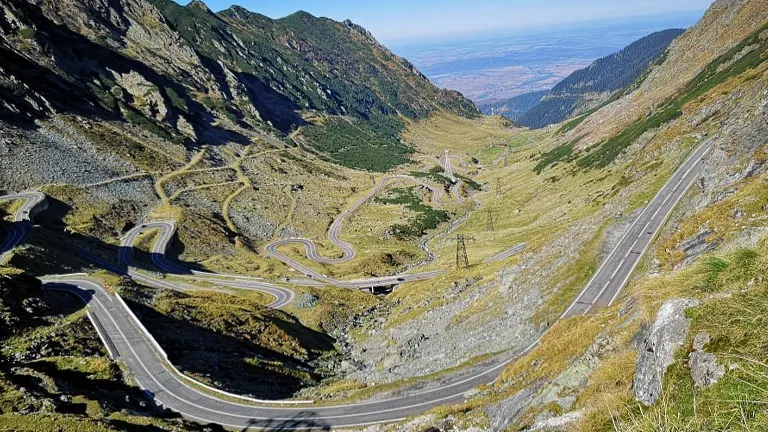
The Transfăgărășan Highway carves through the Carpathian Mountains, offering breathtaking views and a thrilling drive. This paved road stretches over 90 kilometers and is famed for its sharp turns, steep grades, and scenic beauty.
- Unique Features: Acclaimed as one of the most beautiful drives in the world, it provides stunning views of the mountains and valleys, including Balea Lake.
- Size & Difficulty: 90 kilometers long; the road is technically easier to navigate than unpaved trails but requires caution for its sharp bends and potential fog.
- Best Time to Visit: Late June to October, when the road is mostly clear of snow and safer to travel.
- Visitor Tips: Weather can change rapidly; drivers should be prepared for varying conditions. Several scenic stops along the way encourage slow travel.
- Associated Fees: No toll or fee for driving on the Transfăgărășan Highway itself.
5. Atlas Mountains, Morocco

The Atlas Mountains trail offers a mix of challenging terrains and cultural experiences, navigating through rocky landscapes, ancient villages, and high mountain passes. This trail gives off-roaders a taste of Morocco’s natural beauty and historical depth.
- Unique Features: Views of Toubkal, the highest peak in North Africa, and interactions with the Berber tribes offer insights into the local culture and lifestyle.
- Size & Difficulty: Varies greatly depending on the chosen route; ranges from moderate to highly challenging paths.
- Best Time to Visit: Spring (April to June) and autumn (September to November) offer the best weather conditions for exploration.
- Visitor Tips: Respect for local customs and regulations is paramount. Hiring a local guide can greatly enhance the experience by providing cultural context and navigation assistance.
- Associated Fees: No specific trail fee, but hiring a local guide or tour can vary, typically costing between $50 to $200 per day, depending on the level of service and length of the tour.
6. Mojave Road, USA
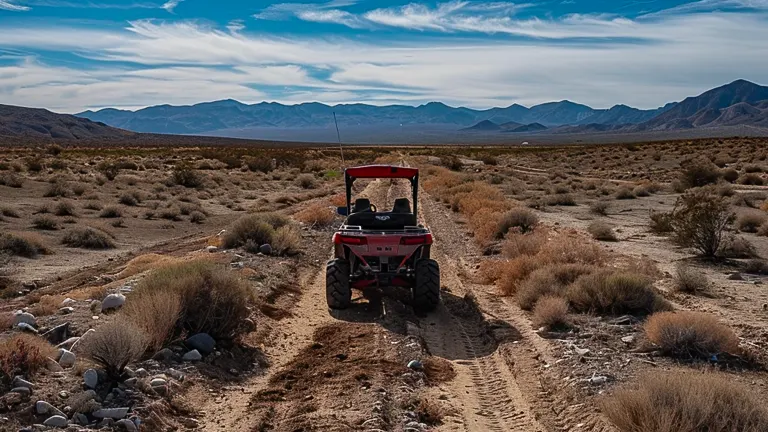
Stretching over 230 kilometers through the Mojave National Preserve, the Mojave Road offers an immersive journey through one of America’s most scenic deserts. This historic trail traces routes once used by Native Americans, showcasing varied landscapes from sandy washes to rocky canyons.
- Unique Features: Landmarks like the Joshua Tree forests, the Mojave River, and ancient lava flows add to its allure. It’s a journey through time, showcasing the natural history and cultural heritage of the area.
- Size & Difficulty: Approximately 230 kilometers; the trail presents a moderate challenge suitable for most 4×4 vehicles with basic modifications.
- Best Time to Visit: Spring (March to May) and fall (October to November) are ideal to avoid the extreme summer heat and cold winter nights.
- Visitor Tips: Travelers should pack plenty of water, spare fuel, and must navigate by GPS or detailed maps due to the lack of cell service.
- Associated Fees: No fee to travel the Mojave Road, but camping in the Mojave National Preserve requires a free permit available at visitor centers.
7. Salar de Uyuni, Bolivia
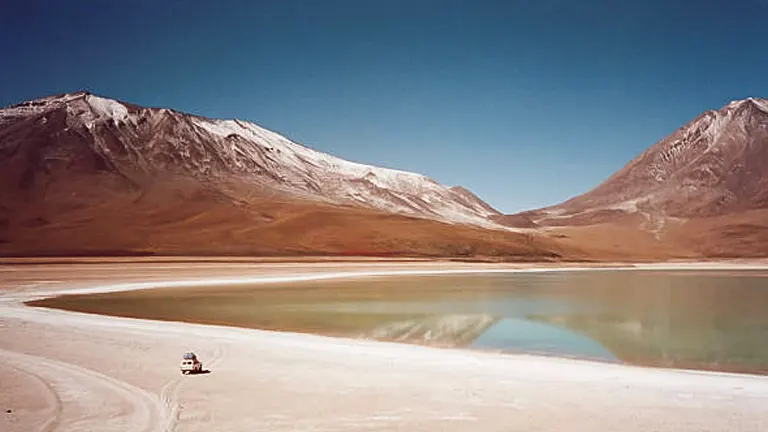
The Salar de Uyuni is the world’s largest salt flat, stretching over 10,582 square kilometers. Driving across this vast, white expanse offers a unique adventure that feels otherworldly, with the salt crust providing a firm surface for off-roading.
- Unique Features: The surreal landscape, especially after a rain when it becomes a giant mirror reflecting the sky, offers unparalleled photo opportunities.
- Size & Difficulty: Over 10,582 square kilometers; the flat surface makes driving relatively easy, but navigation can be challenging due to the uniform landscape.
- Best Time to Visit: The dry season from May to October offers the easiest driving conditions, while December to April provides the mirror effect after rains.
- Visitor Tips: Guided tours are recommended for first-timers. Ensure your vehicle is prepared for the altitude and temperature extremes.
- Associated Fees: Accessing the salt flats doesn’t typically involve a fee, but guided tours can range from $30 to $250 per person, depending on the duration and inclusions.
8. The Old Telegraph Track, Australia
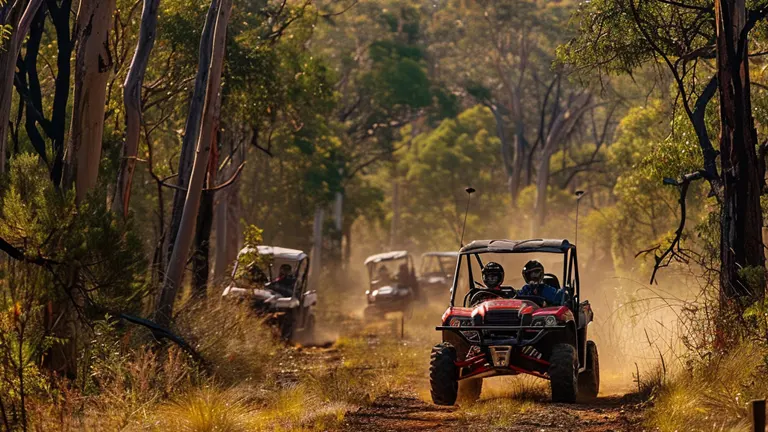
The Old Telegraph Track is an iconic route in Northern Australia, offering one of the most challenging and rewarding 4WD experiences down under. This trail runs through Cape York Peninsula, featuring deep river crossings, steep climbs, and muddy holes.
- Unique Features: It’s a test of driving skill and vehicle capability, with highlights including the Gunshot Creek crossing and the fruit bat falls.
- Size & Difficulty: The track is around 350 kilometers long, with sections that vary from moderately difficult to extremely challenging, especially after rain.
- Best Time to Visit: The dry season from May to October is the safest time to attempt this track, as river levels are lower and crossings are more manageable.
- Visitor Tips: A high-clearance 4WD vehicle is essential, as is traveling with recovery gear and at least one other vehicle for safety.
- Associated Fees: No fee to drive the Old Telegraph Track itself, but a permit is required for camping in some areas, typically around AUD 6.50 per person per night.
9. Ring Road, Iceland
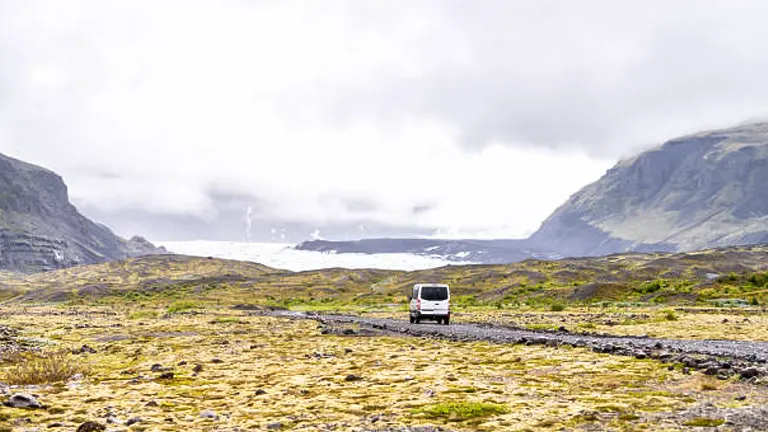
Iceland’s Ring Road encircles the island nation, offering an epic road trip that covers approximately 1,332 kilometers. While not an off-road trail in the traditional sense, it provides access to numerous off-road tracks and stunning natural phenomena, from waterfalls and glaciers to volcanic landscapes.
- Unique Features: The Ring Road itself is a gateway to exploration, with each region offering unique landscapes and challenges for off-road enthusiasts.
- Size & Difficulty: The main road is well-maintained and suitable for all drivers, but side tracks vary greatly in difficulty and require appropriate vehicles.
- Best Time to Visit: Summer (June to August) offers the best conditions for travel and access to most tracks.
- Visitor Tips: Renting a 4WD vehicle is recommended to explore off the main road. Be mindful of weather conditions, as they can change rapidly.
- Associated Fees: While the Ring Road is free, rental fees for a 4WD vehicle vary widely, starting from approximately $80 per day, depending on the model and rental duration.
10. Kalimantan, Borneo, Indonesia

The heart of Borneo offers untamed jungle trails that are as challenging as they are beautiful. Adventuring through Kalimantan’s dense forests and rugged terrain provides a glimpse into one of the world’s most biodiverse areas, home to unique wildlife including orangutans.
- Unique Features: Deep jungle expeditions and river crossings in remote areas offer an authentic adventure far from the beaten path.
- Size & Difficulty: Varies significantly; many trails are only suitable for experienced off-roaders with well-equipped vehicles.
- Best Time to Visit: The dry season from June to September offers more manageable conditions for travel.
- Visitor Tips: A local guide is indispensable for navigating the complex terrain and respecting the delicate ecosystem.
- Associated Fees: No specific fees for accessing most trails, but hiring a local guide or participating in an organized tour can cost from $100 to $500 per day, depending on the level of support and length of the expedition.
Gear and Preparation
Embarking on an off-road adventure requires not just a spirit of adventure but also meticulous preparation and the right gear. Whether you’re crossing the expansive salt flats of Bolivia or navigating the dense jungles of the Darien Gap, being properly equipped is paramount to a safe and enjoyable experience. Here’s a breakdown of essential off-road gear and preparation tips:
Essential Off-Road Gear:
- Vehicle Preparation: Ensure your vehicle is suitable for off-road conditions. This includes having a 4WD with high clearance, off-road tires, a winch, skid plates, and rock sliders. For specific trails, additional modifications may be necessary.
- Navigation Tools: Reliable GPS navigation systems and detailed maps of the area you’re exploring are crucial. In remote areas like the Simpson Desert or the Darien Gap, having a satellite phone can be a lifesaver.
- Recovery Kit: Includes items such as a tow strap, shovel, tire repair kit, and air compressor. It’s essential for self-recovery or assisting others in challenging sections.
- Camping Gear: For multi-day adventures, high-quality camping gear suited to the environment will enhance your experience. This includes a durable tent, sleeping bags, cooking equipment, and sufficient food and water supplies.
- Safety and First Aid: A comprehensive first-aid kit, fire extinguisher, and emergency beacon (PLB or EPIRB) are must-haves for dealing with potential emergencies.
Preparation Tips:
- Vehicle Maintenance: Before departure, thoroughly check your vehicle’s mechanical condition, focusing on the engine, suspension, brakes, and fluid levels to ensure everything is in top shape.
- Route Planning: Research your route extensively. Understand the challenges, the best time to visit, and any permits or reservations you might need.
- Skill Development: Especially for challenging trails like the Old Telegraph Track or the routes through the Atlas Mountains, consider off-road driving courses to hone your skills.
- Environmental Consideration: Practice Leave No Trace principles to minimize your impact on the natural environment. This includes properly disposing of waste, respecting wildlife, and adhering to trail regulations.
- Local Knowledge: Engage with local communities and possibly hire guides where recommended. Their expertise and insights can enhance your safety and enrich your experience.
Navigating Challenges
Off-roading can test your limits and sometimes push your vehicle to its brink. Being prepared for common challenges ensures not only your safety but also the protection of the natural areas you explore. Here’s how to tackle some of the most common off-roading obstacles:
Dealing with Difficult Terrain
- Mud and Water Crossings: Always gauge the depth and firmness before attempting to cross. Use a stick or a walking pole if needed. Engage low gear and maintain a steady pace without stopping.
- Sand Dunes: Lower tire pressure to increase traction. Keep a steady throttle and aim straight up or down dunes to avoid rollovers.
- Rock Crawling: Use low gear and go as slow as necessary, picking a line that keeps your wheels on the highest ground. Avoid sharp rocks that can damage tires.
Mechanical Issues
- Preventive Maintenance: Regular checks on your vehicle can prevent many issues. Carry spare parts for common problems like flat tires or broken belts.
- Self-Reliance: Learn basic repair skills. Being able to fix minor mechanical issues can make a difference between getting stuck and making it to your destination.
Environmental Conditions
- Heat and Cold: Prepare for extreme temperatures by carrying appropriate clothing, ample water, and emergency shelter.
- Altitude: When traveling at high altitudes, as in the Atlas Mountains, acclimatize gradually to prevent altitude sickness, and ensure your vehicle is tuned for thin air.
Safety and Emergencies
- Stay Connected: Carry a satellite phone or a GPS messenger in areas with no cell service. Inform someone about your travel plans and expected return.
- Emergency Situations: Always have a first-aid kit, know basic survival skills, and carry an emergency beacon in case you need to signal for help.
Conservation and Respect
Adventuring responsibly is crucial to preserving these natural wonders for future generations. Follow these guidelines to minimize your impact:
- Stay on Designated Trails: Prevent soil erosion and habitat destruction by keeping your vehicle on established paths.
- Pack Out What You Pack In: Leave no trace of your visit. Carry all trash out with you, including food scraps and hygiene products.
- Respect Wildlife: Observe animals from a distance without feeding them or disrupting their natural behaviors.
- Cultural Sensitivity: When traveling through areas with indigenous communities or historical sites, be respectful of local customs and heritage.
By preparing for these challenges and adopting a respectful approach towards nature and local cultures, off-roaders can enjoy the thrills of their adventure while ensuring the trails and their stunning surrounds remain intact and accessible for years to come.
Related Post:
- Explore the Top 15 Must-See Hiking Trails in Colorado for 2025: Your Ultimate Guide
- Discover the Top 15 World’s Most Spectacular Waterfalls: The Ultimate Traveler’s Bucket List
- Discover the Top 12 Mountain Bike Trails in Michigan for 2025: Ultimate Riders’ Guide
- 11 Best Horseback Riding Locations in the USA for 2025: The Ultimate Guide
- Explore the Top 12 State Parks in Alaska for 2025: Your Expert Guide
- Top 10 Camping Sites in Arizona You Need to Visit in 2025: Your Ultimate Outdoor Guide
- Discover the Top 20 World-Class Hiking Adventures in 2025
- Top 10 Most Spectacular Kayaking Spots in Texas: Must-Visit Destinations
Conclusion
Off-roading is more than a hobby; it’s a journey into the heart of what it means to be an explorer. The trails listed in this guide offer a diverse range of experiences, from the desolate beauty of the Salar de Uyuni to the challenging terrains of the Darien Gap. Each destination demands not only physical preparation but also a mindset geared towards respect for nature and the cultures encountered along the way.
As adventurers, it’s our responsibility to ensure that our pursuit of thrill does not come at the expense of the environments we explore or the communities we interact with. Practicing ethical off-roading and adhering to conservation principles are non-negotiable aspects of this sport. By doing so, we contribute to preserving these incredible landscapes for future generations while enjoying the profound personal growth that comes with facing the challenges of the wild.
FAQs
- What makes the trails selected for 2025 unique compared to previous years?
The 2025 selection highlights trails that offer a mix of cultural significance, unparalleled natural beauty, and challenging terrains that have recently become accessible or have seen significant improvements. These factors contribute to a richer off-roading experience. - How do I choose the right off-road trail for my experience level?
Evaluate the difficulty rating and terrain type of each trail. Beginners should look for trails with fewer technical challenges, while experienced off-roaders might seek out trails offering complex navigation and rugged terrains. Always consider local guides for trails that push your limits. - Are there any conservation efforts in place to protect these trails?
Yes, many of these trails are under conservation efforts to protect the environment and cultural heritage. Off-roaders are encouraged to follow Leave No Trace principles and respect local guidelines to contribute to these efforts. - What are the must-have gear items for these off-road adventures?
Essential gear includes a reliable 4WD vehicle, navigation tools, recovery kit, appropriate clothing for the climate, and a first-aid kit. Specific trails may require additional equipment, such as sand ladders for desert crossings or winches for dense jungles. - Can I undertake these trails solo, or is a convoy recommended?
While some trails can be navigated solo by experienced off-roaders, many of the trails in the 2025 list are best tackled in a convoy. This ensures safety through mutual support in challenging terrains and emergency situations. - What preparations are critical before embarking on these trails?
Thorough research, vehicle checks, route planning, and packing essential gear are critical. Additionally, understanding local customs, weather patterns, and trail conditions can significantly impact your adventure’s success and enjoyment. - How do off-roaders manage navigation in remote areas like the Darien Gap or the Simpson Desert?
Advanced GPS systems, satellite phones, and detailed maps are crucial for navigation in remote areas. Pre-trip planning with waypoints and understanding the use of navigation tools in off-grid settings are also vital. - What steps can I take to ensure my off-road adventure is environmentally responsible?
Staying on designated trails, minimizing waste by packing out what you bring in, using biodegradable products, and avoiding disturbances to wildlife are key steps. Additionally, supporting local conservation projects can contribute positively to the regions you explore.
We’re eager to discover the paths you’ve taken on the world’s most thrilling off-road trails! Please share with us your adventures, insights, and moments that took your breath away. Let’s celebrate together the spirit of off-road exploration and our mutual commitment to preserving the breathtaking landscapes we hold dear.
Explore our dedicated section on national forests and state parks to uncover hidden gems and outdoor wonders.

Benjamin Brooks
Forestry AuthorGreetings! I'm Benjamin Brooks, and my journey over the past 15 years has revolved around the fascinating realms of content creation, expertise in snow clearing, and the intricate world of lumberjacking and landscaping. What began as a simple curiosity about the natural world and heavy machinery has evolved into a passionate profession where my love for crafting words intertwines seamlessly with my lumberjacking and garden skills.













Leave your comment